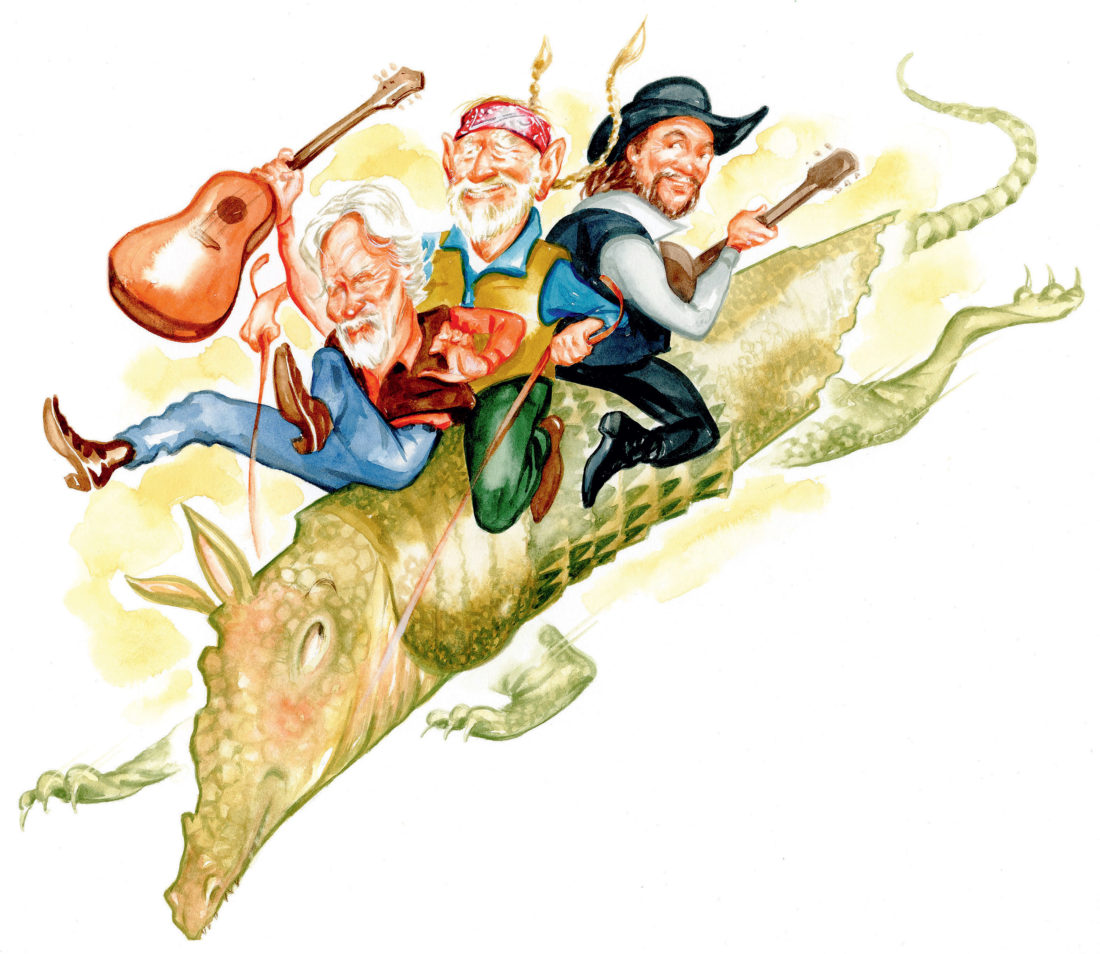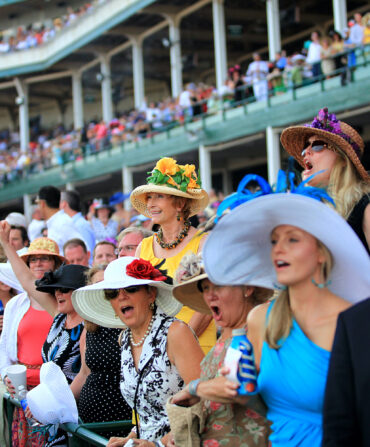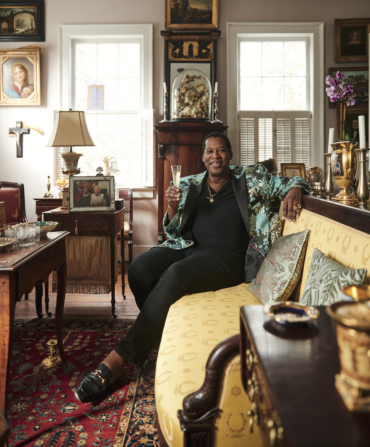MUSIC
Tennessee
Country’s Cowboys
In the mid-1970s, Music Row bigwigs dubbed them outlaws—Waylon Jennings, Willie Nelson, Jerry Jeff Walker, Billy Joe Shaver, Merle Haggard, Townes Van Zandt, Guy Clark, Bobby Bare. “But they didn’t want to be called anything—they just wanted the freedom to be artists,” says Michael Gray, the cocurator of the Country Music Hall of Fame’s new exhibit, Outlaws & Armadillos: Country’s Roaring ’70s (through February 14, 2021). “For a long time, music was made from the top down. Record executives decided everything.” The Nashville Sound—a slick pop-country hybrid forged in the fifties and sixties in response to rock and roll—sold records, but Jennings and crew hungered for the ability to write, record, and produce their own songs. Word was that musicians could find creative license in Austin, Texas, where strands of country, bluegrass, folk, blues, rock, and conjunto melded in honky-tonks such as Armadillo World Headquarters and the Broken Spoke. Nelson headed southwest first after a 1971 fire destroyed his Tennessee farm. Bare and Jennings would visit, too; they hooked up with Texas troubadours such as Van Zandt and Clark. “Folks like to pit Nashville versus Austin,” Gray says. “The exhibit shows the complicated but surprising relationship between the two music cities.” More than two years in the making, Outlaws & Armadillos includes such rare artifacts as the Randall knife that inspired Clark’s song of the same name, one of Jennings’s Telecaster guitars, the Ringling Brothers overalls Joe Ely donned when he briefly quit the music biz, a handful of original (and highly collectible) Jim Franklin show posters, and even the actual Luckenbach bar door that inspired the cover art for Jerry Jeff Walker’s seminal album ¡Viva Terlingua! The Austin documentary filmmaker Eric Geadelmann, who spent the last four years researching outlaw country, also contributed loads of historical concert footage as well as never-before-seen interviews with the movement’s major players, who blazed trails music is still following today. countrymusichalloffame.org
OPENING
Alabama
Grand New
The Grand Hotel in Point Clear has shuttered operations just five times in its 170-year history; two wars (Civil, World War II) and three hurricanes (an unnamed 1893 storm, Frederic in 1979, and Katrina) are what temporarily closed the reservation books. During the much-loved Gulf Coast resort’s recently completed top-to-bottom renovation, which began in late 2016, the unflappable hotel staffers continued to welcome visitors. “The guest rooms are in five different buildings, which allowed us to shuffle things around without actually closing,” says Kevin Hellmich, the resort’s director of sales and marketing. “The Grand maintains its charm. We’ve just updated it with modern touches.” Inside the property’s 405 rooms, everything from mattresses to linens to bathroom fixtures have been upgraded. At the 20,000-square-foot spa, manicures and blowouts now come with a marina view. And down by the main pool and beach, guests can lounge in new private cabanas. There’s a trio of new restaurants, too. You can play a round of boccie or croquet while you wait for your meal at Bayside Grill. At Southern Roots, dive into Gulf-driven dishes such as fresh-caught grouper with veggies from the newly expanded garden. And toast the Grand’s next 170 years with a nightcap at the restaurant’s swank new bar, 1847. grand1847.com
MUSIC
Arkansas
The Hills Are Alive…
“Opera is not a fat lady onstage screaming her lungs out,” says Nancy Preis, general director of Opera in the Ozarks at Inspiration Point (June 22–July 20). “Opera is simply telling a story with music.” You need not travel to Paris or Vienna or Milan or even New York City to hear arias finessed by the best. Just follow U.S. Route 62 for the six twisty miles from Eureka Springs to the top of Rock Candy Mountain, where nearly two dozen of the country’s most talented young basses, baritones, tenors, mezzo-sopranos, and sopranos gather each summer for a nine-week-long train-ing program and festival. This year, the gifted Opera in the Ozarks students—alumni have sung in nearly every major opera house in the world—will perform Rossini’s Il barbiere di Siviglia, Johann Strauss II’s Die Fledermaus, and Douglas Moore’s The Ballad of Baby Doe, while the program’s undergrad vocalists take their act on the road to area public libraries in free one-hour performances that feature familiar story lines, like this year’s retelling of Cinderella. If you’re after dinner and a show, secure a seat for the Taste of Opera gala on July 18 at the historic Crescent Hotel in Eureka Springs. Non–opera fans, take note: This year, the group will host a Broadway cabaret on July 10. opera.org/inspiration-point
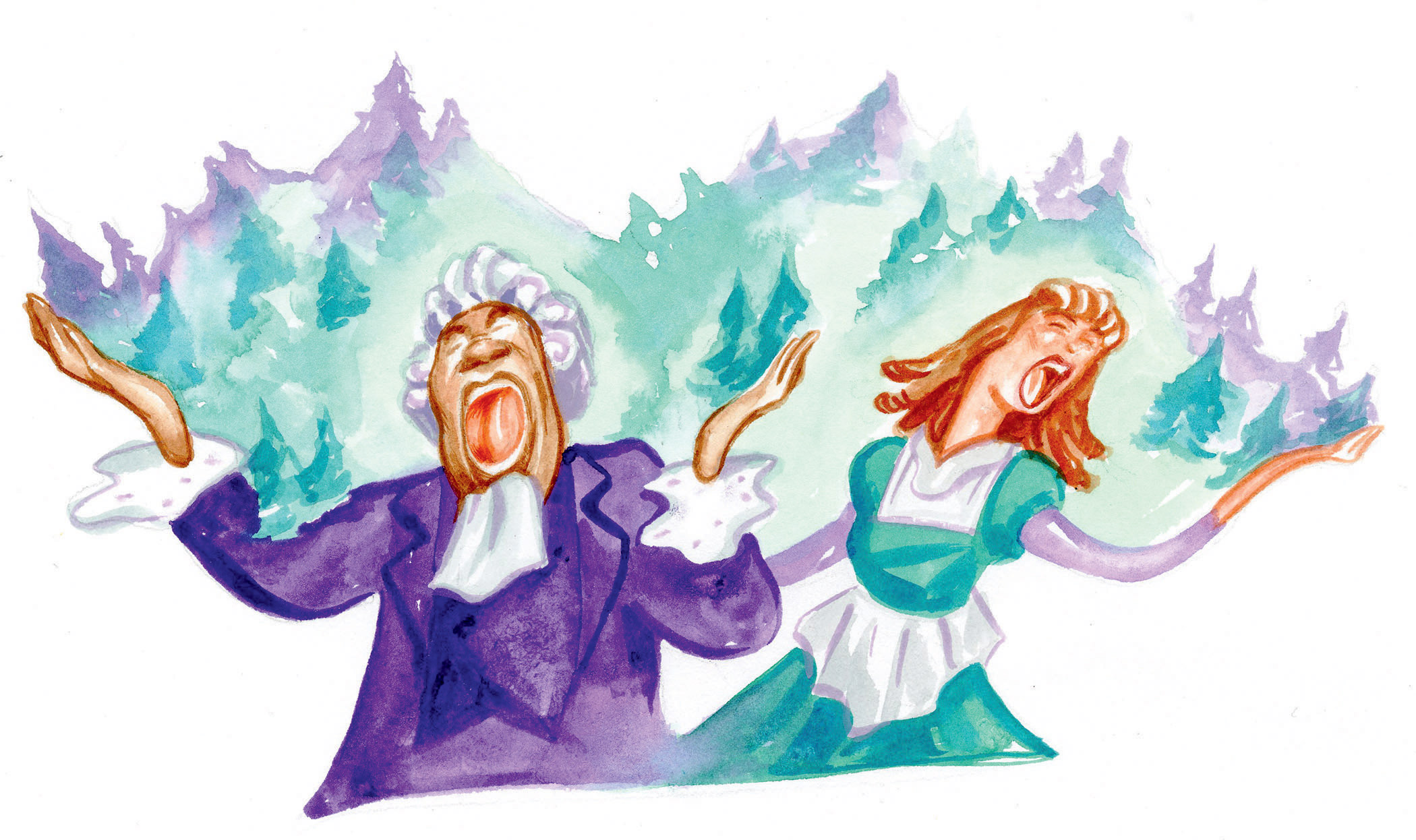
Tim Bower
FOOD
Florida
Imagineered Eats
At some point in nearly every life, all roads bend toward the Magic Kingdom. When they do, you’ll dutifully spin in the teacups and thunder down the mountain, and then you’ll want a nice, civilized meal, and just maybe an adult beverage. After two attempts at grown-up destinations (RIP, Pleasure Island and Downtown Disney), the determined folks at Disney launched Disney Springs in Lake Buena Vista in 2015, and the third time seems to be proving the charm. The 120-acre complex is free to enter, and there’s not a costumed character in sight. What you will find are more than 150 shops, bars, and restaurants, including five dining establishments helmed by James Beard Award–winning chefs. In 2016, chef Art Smith—who grew up in Jasper—opened the Florida-accented Homecomin’, which dishes out Southern comfort foods like “church lady” deviled eggs, house-made hush puppies with jalapeño jelly, and buttermilk-brined fried chicken. Rick Bayless followed with his lakeside Mexican cantina, Frontera Cocina. This spring, Tony Mantuano began welcoming guests to Terralina, inspired by the food traditions of Northern Italy’s Lake District. As of this summer, you can snack on charcuterie and sip from more than a hundred wines hand selected by hometown master sommelier George Milotes at Wine Bar George. And come fall, two more world-renowned chefs—José Andrés and Wolfgang Puck—are slated to begin making their own culinary magic. disneysprings.com
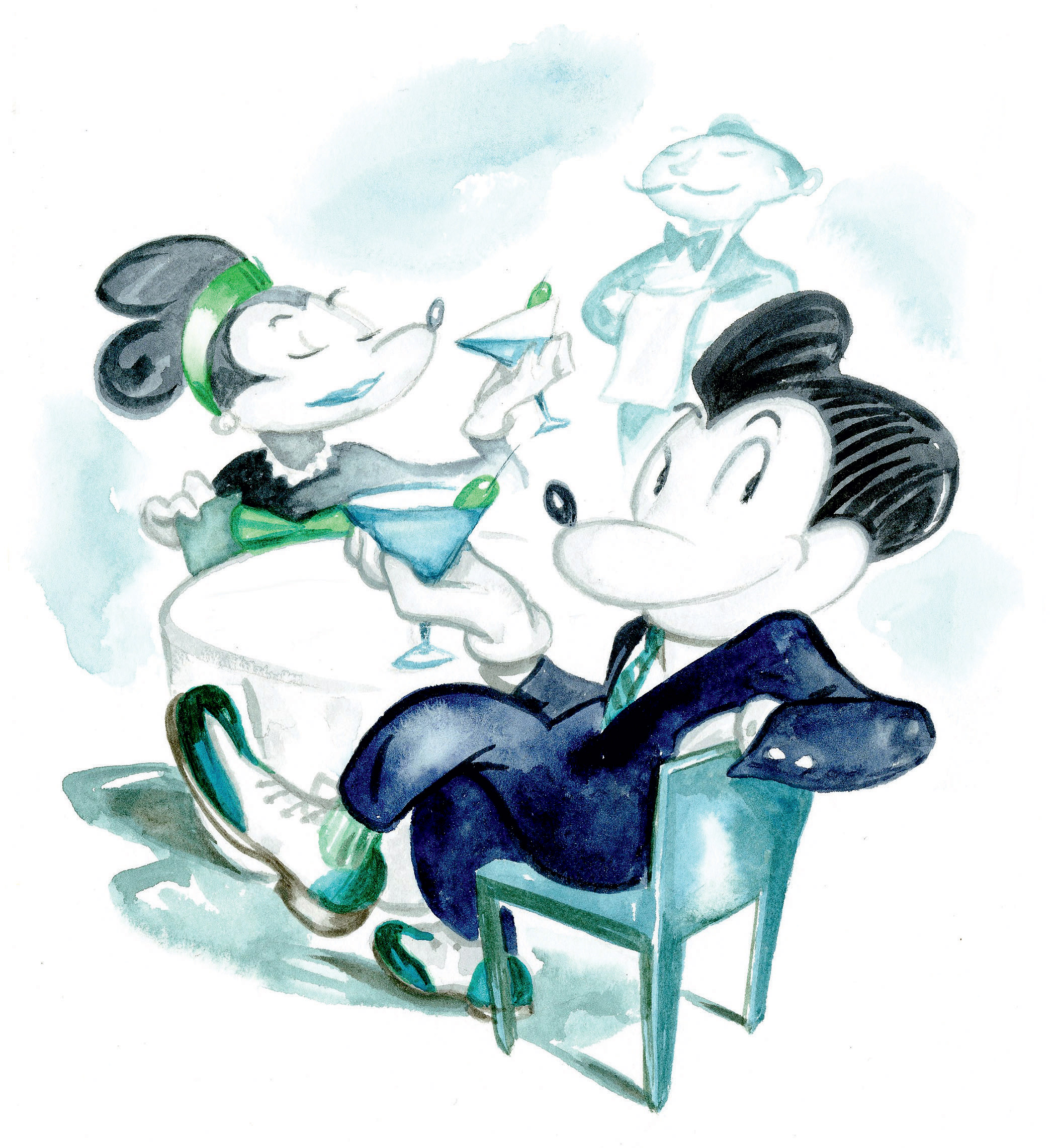
Tim Bower
CONSERVATION
Georgia
A Fin State of Affairs
Da-dum. With just two notes, Steven Spielberg and composer John Williams turned sharks into Hollywood’s most terrifying villains. Forty-three years after Jaws hit theaters, moviegoers (and sharks’ reputation) have yet to completely recover. But the conservation-minded team at the Little Saint Simons Island resort—occupying 11,000 largely undeveloped acres amid the famed Golden Isles—is doing damage control with its third annual Shark Days summit (July 24–29). “We hope to dispel any instinctual reservations or misconceptions and create a better understanding of sharks’ importance in global marine ecosystems,” says Little Saint Simons naturalist Cohen Carpenter. “We want to instill a fear of oceans without sharks.” They appear to be succeeding. Last year, the six-day hands-on experience, which takes guests out of the classroom and onto the water, sold out. Inshore and surf fishing trips, led by Captain Brooks Good and a trio of the field’s top scientists, teach attendees how to identify, tag, and release the blacktip, bonnethead, bull, finetooth, and lemon sharks that glide through these waters. Shark pups are particularly prevalent here, Carpenter says: “The shallow waters and estuaries provide them with protection from larger predators as well as ample feeding opportunities.” Attendees have time to take advantage of the barrier island’s wealth of hiking, biking, boating, birding, and beach-walking, too. If all that face time with the local sharks has you a tiny bit anxious about a dip in the ocean—frightening reputations aren’t rehabbed in a day—make your way to the resort’s saltwater pool instead. littlestsimonsisland.com
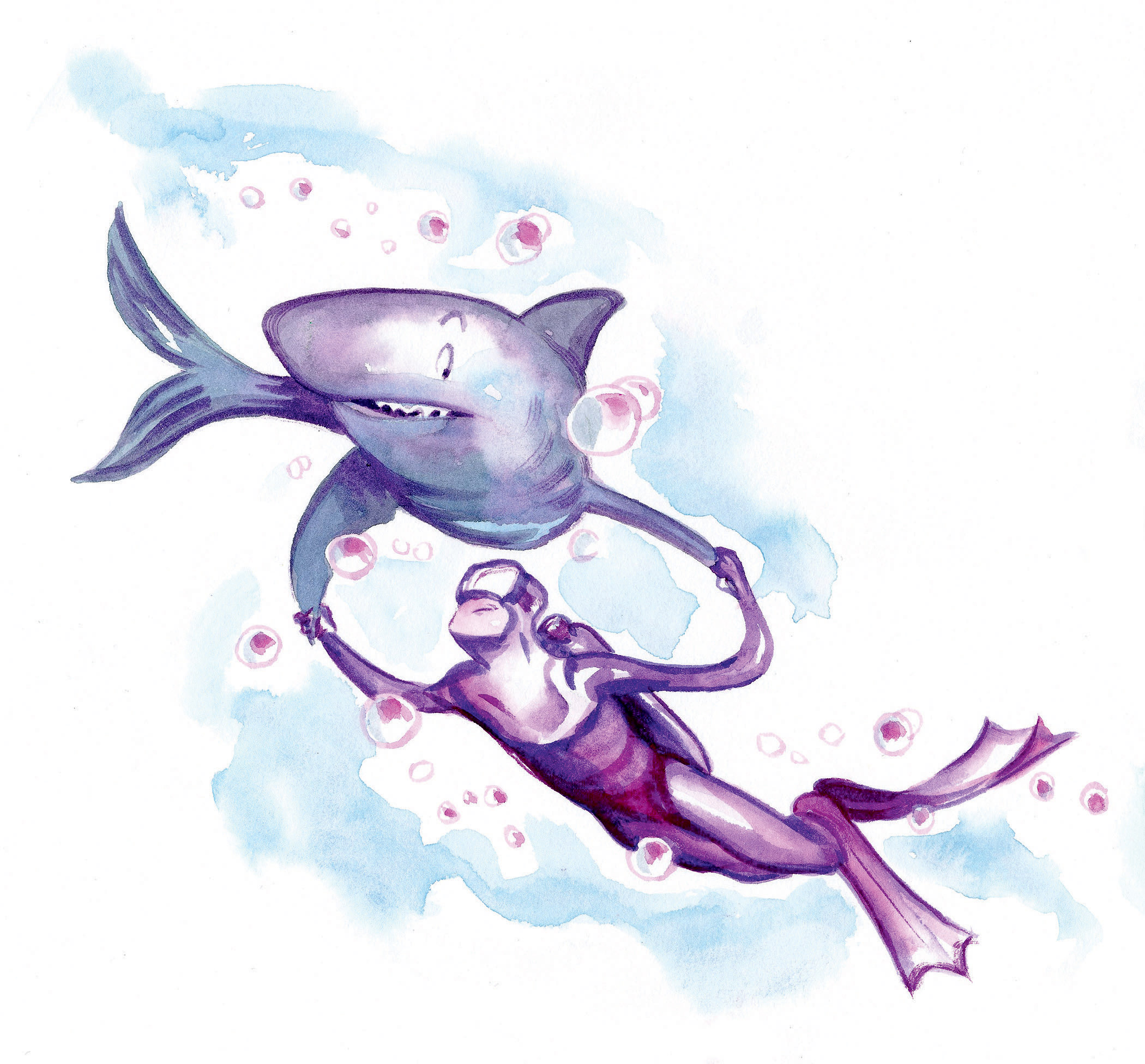
Tim Bower
EQUESTRIAN
Kentucky
Hot to Trot
You can’t throw a hoof pick in Kentucky without hitting an equestrian event, but come July all eyes will be on the Kentucky Dressage Association’s Summer Classic (July 6–8), held at Lexington’s Kentucky Horse Park. The competition is packed mane-to-tail with action: two shows in classes from intro to grand prix plus a breed show. But amid it all, the grace and skill on display at the Classic’s musical freestyle event stand apart. An essential element of competitive dressage, “freestyles” feature horses showing off some truly fancy footwork set to music—ranging from playful prances and strutting sidesteps to triumphant trot extensions. Each competitor choreographs and performs a program. Riders’ near-invisible commands—the hallmark of high proficiency in the sport—make each task seem deceptively effortless. But don’t be fooled. Dressage—the foundation of all other equestrian disciplines, from pleasure riding to show jumping—is rigorous and difficult to master. “Freestyles bring welcome creativity to a regimented pursuit,” says KDA president Daphne Nimmons-Marvin. kentuckydressageassociation.com
FOOD
Louisiana
Fresh-Squeezed Facts
Citrus’s contribution to New Orleans culinary culture is no pulp fiction. The fruits remain an important crop for farmers in southern Louisiana, and the annual arrival of one species in particular, the dainty, delicious satsuma—whose squatty trees are found in many a Crescent City courtyard—is a late-fall treat highly anticipated by locals. Citrus has even taken root in NOLA holiday traditions. “Creoles used to decorate small citrus trees for Christmas,” says Jessica B. Harris, cocurator of the food forum at the Historic New Orleans Collection museum. “I’ve started getting a live citrus as my Christmas tree, too, and later, I put it in my backyard.” Harvest a few more tidbits at the museum’s Pulp Facts: Celebrating Citrus gathering on June 9. “Have you ever wondered why that lemon’s in your curd?” Harris says. “Or pondered the origin of the satsuma in your sorbet? This event has answers.” Annually, the daylong culinary forum focuses on a food significant to southern Louisiana, placing citrus alongside such past topics as pralines, red beans and rice, rum, and coffee. This year, French author Pierre Laszlo will peel back sections of citrus history, and cookbook collector Rick Ellis will slice into classic citrus recipes from his collection. While there will be tastings, it’s no all-day-eating affair. But don’t let that sour you; for your intellect, Harris promises immersive refreshment. hnoc.org
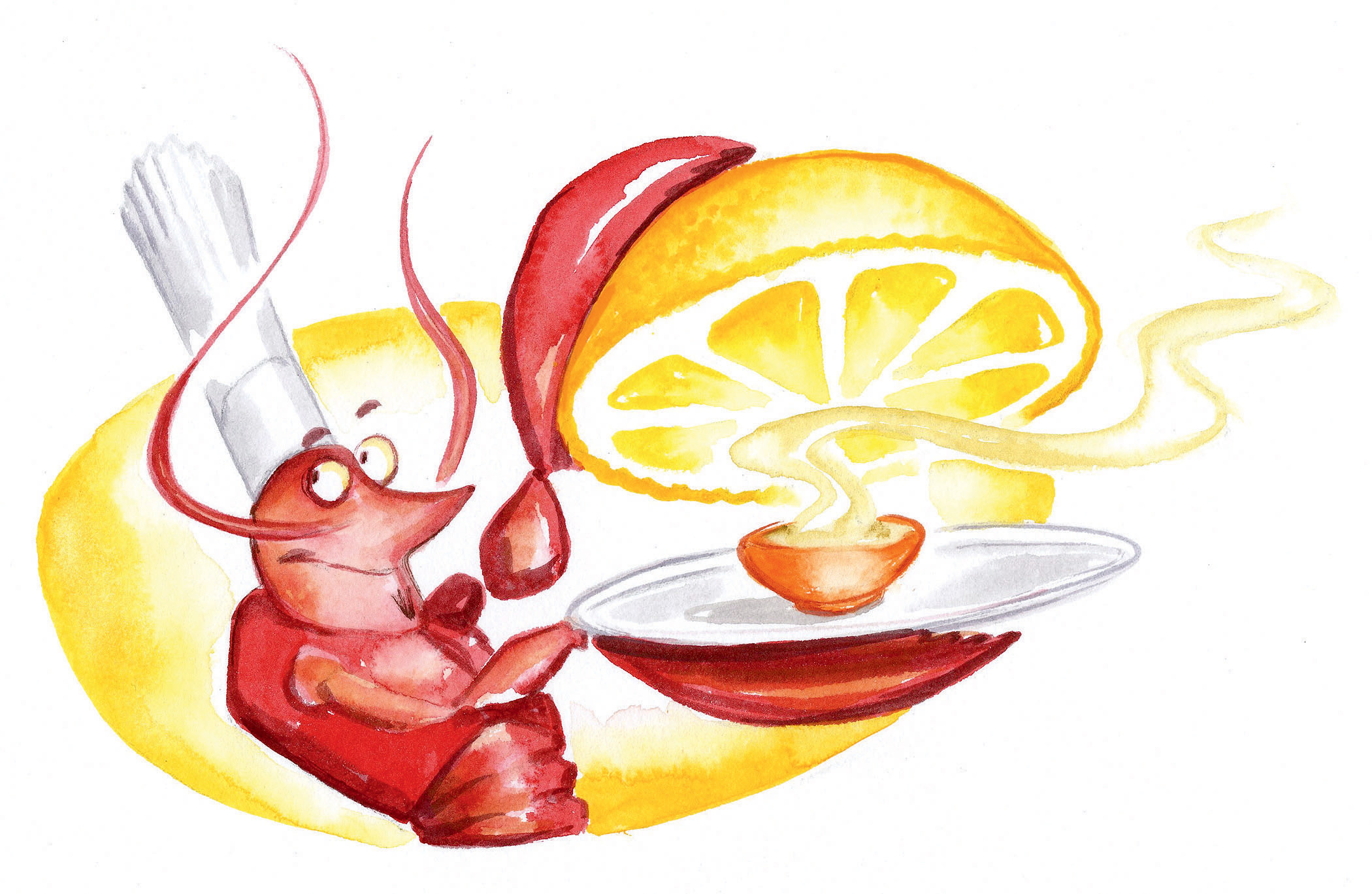
Tim Bower
OUTDOORS
Maryland
Antiques Ahoy
Do you go gaga for gleaming teak? Chart a course for the Antique & Classic Boat Festival & Arts at Navy Point (June 15–17) in St. Michaels. Held at the Chesapeake Bay Maritime Museum and hosted by the Chesapeake Bay Chapter of the Antique & Classic Boat Society, the event lures thousands of nautical nostalgists with nearly a hundred vintage watercraft. This year, its thirty-first at the museum, the festival highlights ski boats from makers like Chris-Craft and Donzi, but everything from sleek-bowed Jersey skiffs and handsome mahogany runabouts to cruisers and racers will be moored at the museum’s docks, making the fest the mid-Atlantic’s largest gathering of classic boats and boat lovers. “Last year, we had a nine-foot hydroplane on up to a seventy-three-foot cruiser and a few 1880s log sailing canoes,” says Bob Hamilton, the event chair. Another big draw is the Field of Dreams market, offering fully restored vessels as well as a few faded beauties in need of TLC. Refurbishment workshops and rides around the bay provide activity; local food vendors and a pop-up rum bar ensure proper provisioning. “There are also seventy artists with maritime-themed works, and we have folks who come just for that,” Hamilton says. But it’s the camaraderie of the antique boat community that keeps the festival seaworthy. “Its appeal is as much about the people here as it is the boats.” cbmm.org
MUSIC
Mississippi
Sport of the Kings
Elvis Aaron Presley was born on January 8, 1935, in a two-room shotgun shack in Tupelo. Thirteen years later the Presley family relocated to Memphis, where the kid would become the King. But that fact didn’t weaken Tupelo’s affection for its native son. Today, the hip-shaking icon is still the city’s biggest claim to fame, and, boy, is it good at the claiming. At the annual Tupelo Elvis Festival (June 6–10), hometown pride reaches a fever pitch, with a Sunday gospel concert, a Running with the King 5K, and a stream of rock and blues performances from local and national artists. But for many, the highlight is the Tribute Artist Contest, wherein a small army of look-alikes face off in extravagant performances. The competition is an official feeder for the Ultimate Elvis Tribute Artist Contest held each August at Graceland (cash prize: $20,000). Competitors flock to Tupelo from around the world, says organizer Reagan Pepper, and it’s serious business. Think you’ve got what it takes? Here’s a pro tip: Prepare your pipes. “Vocals count twice,” Pepper says. Authenticity is another factor. Elvis went through several distinct creative stages. “If someone gets up there and sings a fifties Elvis song, they don’t need to be in a seventies Elvis jumpsuit.” tupeloelvisfestival.com
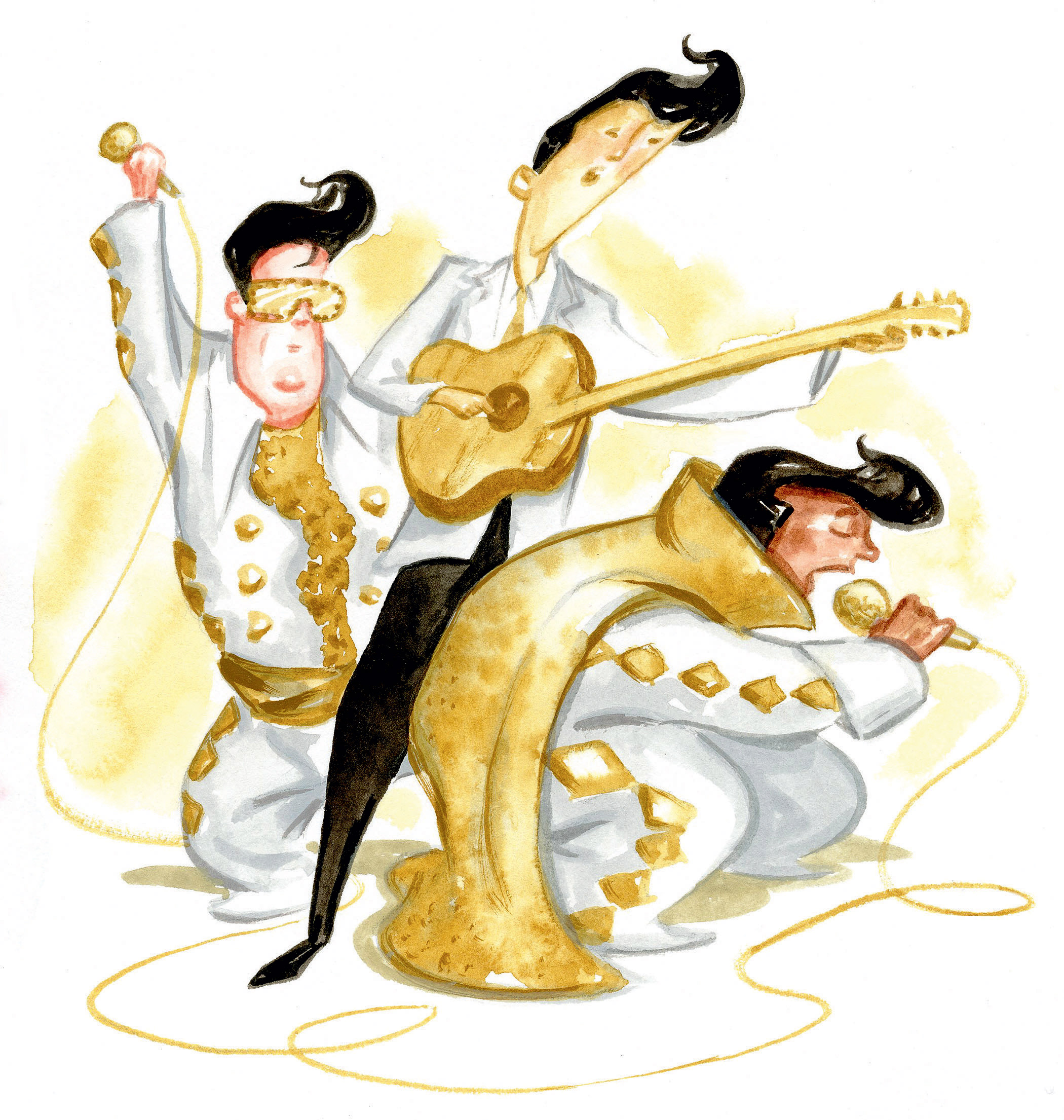
Tim Bower
HOLIDAY
North Carolina
Sport of the Kings
The first public Independence Day ever observed, in 1783 in Salem, was a far cry from the fireworks-capped affairs we’ve come to know and love. “That first Fourth focused on peace and gratitude,” says Frank Vagnone, president of the Old Salem Museums & Gardens in what is now Winston-Salem. The Moravians, who had fled religious persecution in Europe and established the town, assigned special significance to America’s emergence as its own nation. “It ensured the freedom they’d found here,” Vagnone says. So in 1783, when North Carolina’s governor decreed July 4 a day of public thanksgiving, the Moravians didn’t hesitate. “They gathered in Salem’s square, joined hands, prayed, and sang hymns,” Vagnone says. Today, Old Salem’s Independence Day celebration includes music, demos from craftsmen (including bakers hawking Moravian sugar cakes and more), and hands-on activities such as quilting and pottery making. The museums, buildings, and gardens (all open on July 4) serve as a backdrop for something more powerful than fireworks. “Immigration is the core of this place,” Vagnone says. “Our naturalization ceremony usually includes about thirty people from as many as twenty countries taking their oath of allegiance. They’ve spent years working for this, and you get to see the moment they become U.S. citizens. It’s life-changing for everyone.” oldsalem.org
FILM
Oklahoma
Movie Night
For today’s younger tablet-toting generation, drive-ins are a strange novelty (“You mean the screen is outside the car?”). For their parents and grandparents, going to the theaters—over four thousand of them across America by the 1960s—was a summertime rite of passage. But rapidly advancing technology, the introduction of daylight saving time, and the energy crisis of the 1970s cut the reign of the outdoor silver screens short. Today, only about three hundred remain. Which makes the Oklahoma City area’s trio of throwback theaters even more special. Within Oklahoma City proper, the Winchester Drive-In Theater, built in 1968 and still operated by the Shanbour brothers, is summer-run only with nightly double features. The circa-1949 Chief Drive-In, off Highway 81 in nearby Chickasha, recently went digital and is open for business year-round, weather permitting. Dogs are welcome. And groups at the on-site mini-golf course can tee off beginning at 7:00 p.m. until the opening credits roll. To complete the trifecta, head over to Guthrie, where the Beacon Drive-In Theatre, shepherded by the Powell family, welcomes moviegoers on weekend evenings and hosts the Guthrie Flea on Saturdays. The landmark might have inspired the one ripped apart by a tornado in the 1996 blockbuster Twister, but the real Beacon isn’t going anywhere anytime soon—we hope. winchesterdrive-in.com, chiefdriveinheatre.com, beacondrive-in.com
OPENING
South Carolina
Keyed Up
South Carolina native Tom Strange is a physicist with a passion for antique pianos. The pairing isn’t as odd as it may seem at first glance. Einstein himself was an amateur violinist and profoundly influenced by Mozart. Strange’s fascination with classical music began in college and eventually led him to start collecting the vintage instruments, when not pursuing research and development efforts in microelectromechanical devices at his day job for Abbott (formerly St. Jude Medical). He even taught himself to restore them. “He became a renowned expert in the field,” says Roy Fluhrer, the executive director of Greenville’s new Carolina Music Museum, which Strange helped cofound to celebrate the development of early keyboards, as well as the roots of other forms of music-making in the Carolinas. Until the museum opened this spring in the hull of a circa-1930 Coca-Cola bottling plant in the city’s Heritage Green arts district, Strange stored his forty European and American pianos and harpsichords at his home in nearby Easley. He routinely invited nationally recognized classical musicians to play the instruments, which date from 1570 to the mid-1800s, including an 1845 Broadwood grand piano played by Chopin. The museum will continue the tradition—bringing in classically trained South Carolina musicians, including such pianists as David Gross, Fabio Parrini, and Marina Lomazov, to tickle the vintage ivories. carolinamusicmuseum.org
FOOD
Texas
Cranking Back Time
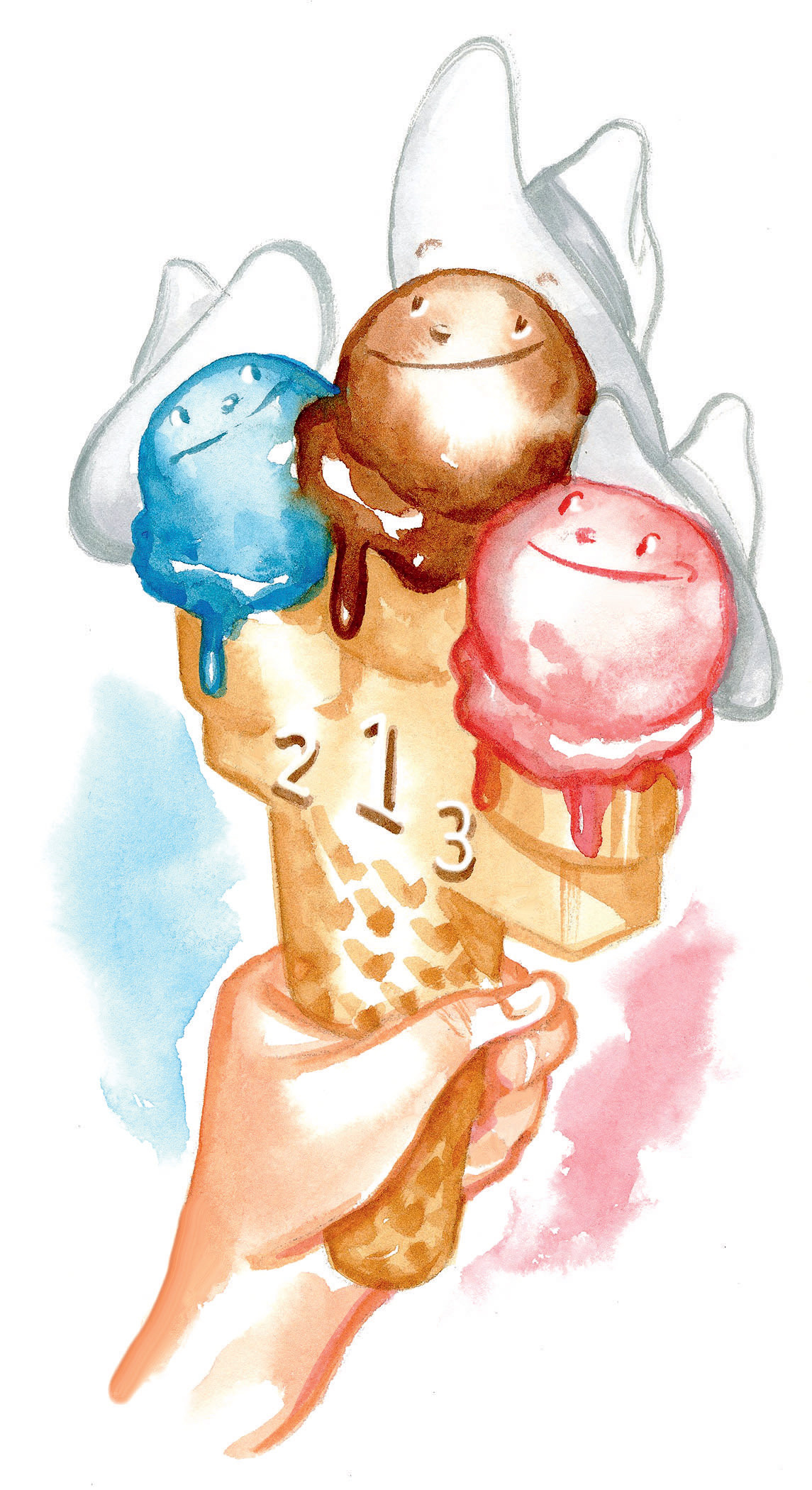
Tim Bower
In the mid-nineties, actual tumbleweeds were more common than pedestrians in downtown McKinney. But a group of optimistic locals, including antiques purveyor Clyde Geer, was determined to lure folks back to Main Street. A downtown July Fourth chili cook-off was floundering until Geer’s father-in-law, Killis Melton, made a straightforward suggestion that saved the day. “I like chili as much as the next guy,” he reportedly said. “But when it’s a hundred degrees out, we ought to crank ice cream instead.” With that simple logic, an annual summer tradition was born, appropriately dubbed the Killis Melton Ice Cream Crank-Off (June 17). Now, a lot has changed in McKinney. Downtown is home to more than twenty restaurants and dozens of shops and galleries—a Rockwellian picture of small-town revival. And though Melton died in 2010, his namesake fest draws more than three thousand ice cream lovers to historic Chestnut Square each June. Competitors are required to bring two prechurned gallons to facilitate one-dollar public samples and then crank one more on-site for the judges. Chocolate, vanilla, strawberry, and peach are well represented; past confections on offer in the “you-made-what?” category include coffee-and-doughnuts, Fireball cinnamon, s’more, candied bacon, and even roasted garlic. Makers don’t just get creative with flavors either. One year, an entrant hooked his churn up to a bicycle to make pedal-powered butterscotch-pecan. chestnutsquare.org
FOOD
Virginia
Estate Dinner
Forty years ago, just after the Inn at Little Washington opened, a Washington, D.C., restaurant critic worriedly penned a note about the new hotel and restaurant: “Will it crumble under the pressure of success?” On the contrary, it swelled, landing five James Beard Awards, five diamonds from AAA, and two Michelin stars. Chef Patrick O’Connell opened the Inn inside an old garage; now it’s a complex of twenty-one buildings in Little Washington, a farming community in the Blue Ridge foothills seventy miles from the Beltway. The town has changed little since POTUS #1, at age seventeen, surveyed it (Gay Street, the story goes, was named after Gay Fairfax, young George’s then sweetheart). O’Connell, a D.C. native, often visited the Virginia hamlet as a boy. His culinary offerings, highly innovative yet smartly referencing bygone days, have fed three queens, a king, and several presidents. In celebration of its fortieth year, the legendary restaurant-cum-hotel will honor the town’s namesake with an extravagant alfresco dinner, titled A Magnificent Dream, at Mount Vernon (June 16), showcasing Revolution-era fare. “The dishes will take you back to your great-great-great-grandmother’s time, when chicken tasted like chicken,” O’Connell says. Following an hors d’oeuvre-heavy garden party, supper unfolds on a lawn facing the Potomac. Event proceeds—tickets start at $2,500—will benefit the preservation of Mount Vernon, which will, at evening’s end, be illuminated by fireworks launched over the river. theinnat40.com
ART
Washington, D.C.
One Heck of a Year
Venerable newsman Dan Rather remembers 1968 with awe. “Unbelievable,” he recalled in a 2005 interview. “There’s not been anything like it since.” Nixon’s election, the slayings of MLK and Bobby Kennedy, and the Tet Offensive are just a few of the year’s watershed events. Sixty-eight also marked the opening of the Smithsonian’s National Portrait Gallery. Half a century later, the museum presents a new commemorative exhibition, One Year: 1968, An American Odyssey (June 29–May 19, 2019). Several pieces on display, like the renowned photograph of African American Olympic athletes John Carlos and Tommie Smith with fists held high, feel eerily relevant today. So too does Roy Lichtenstein’s Time magazine cover art for “The Gun in America,” a cartoon revolver staring readers in the face. The free show features around thirty works, including, of course, many portraits: Lyndon Johnson, Vince Lombardi, Richmond native Arthur Ashe, and Joan Didion, whose book on the hippie generation, Slouching Towards Bethlehem, also debuted in ’68. “It was a wild year,” notes the curator James Barber. But it ended on a high note: Apollo 8, the first mission to the moon’s far side. “That was a real uplift for the country,” Barber says. “It went perfectly.” npg.si.edu
OUTDOORS
West Virginia
Star Search
Smartphones are not a thing in Green Bank. Neither is Wi-Fi. Definitely no Bluetooth. The absences aren’t due to the imposing Allegheny Mountains, which surround the Pocahontas County town (population 143). Rather, it’s state and federal regulations that keep them away. Such tech might interfere with Green Bank’s crown jewels: steerable radio telescopes, one of which is the world’s largest. The town lies in the 13,000-square-mile National Radio Quiet Zone, established in 1958 so that the telescopes can “hear” bits of radio energy drifting through the cosmos. The town takes its responsibility seriously. Recently, a Dollar General store had to remove its automatic doors for fear of interference. What Green Bank doesn’t have in gadgets it makes up for in natural splendor—pristine creeks and lush forests. So it was a no-brainer for locals to organize the now-annual Space Race Rumpus (June 8–10), a proudly off-the-grid outdoors and cycling festival. Live music, camping, local brews, bonfires, and even a square dance accompany bike races for all ages and skill sets. You can also jump on one of the guided road rides, ranging in distance from twenty to fifty-plus miles, or strap on a helmet and hit the recently upgraded trail system—both allow riders to explore the observatory’s unique property. If you want to take a photograph to mark the occasion, though, you’d better pack the Polaroid. spaceracerumpus.org


